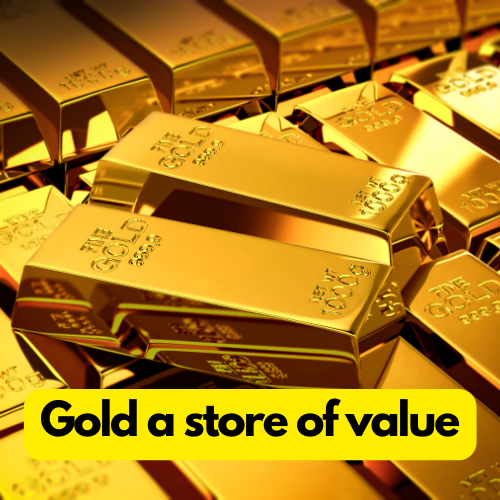Investing in gold and silver can be a part of a diversified investment strategy for several reasons:
-
Store of Value: Gold and silver have historically been recognized as stores of value. They can act as a hedge against inflation and currency devaluation because their value tends to remain relatively stable over time.
-
Diversification: Precious metals provide diversification in an investment portfolio. They often move independently of traditional assets like stocks and bonds, reducing overall portfolio risk.
-
Financial Crisis Hedge: During economic downturns and financial crises, gold and silver tend to perform well. Investors often flock to these precious metals as safe-haven assets when confidence in other investments wanes.
-
Inflation Protection: Gold and silver have a history of preserving purchasing power over the long term. When the value of fiat currencies erodes due to inflation, the value of precious metals can rise.
-
Liquidity: Gold and silver are highly liquid assets. They can be bought and sold in various forms, including coins, bars, and ETFs (exchange-traded funds), making them easily tradable.
-
Portfolio Insurance: Some investors view gold and silver as insurance against catastrophic events that could severely impact financial markets. Holding a portion of your wealth in these metals can provide a safety net.
-
Tangible Asset: Unlike stocks or bonds, gold and silver are tangible assets that you can hold in your possession. This physical presence can provide a sense of security.
-
Global Demand: Precious metals have universal value, and they are in demand worldwide. This demand can help support their prices.
-
Industrial and Technological Uses: Silver, in particular, has numerous industrial applications in electronics, solar panels, and medical equipment. This can create additional demand beyond its use as a precious metal.
-
Portfolio Diversification: Adding precious metals to a diversified investment portfolio can help spread risk and potentially enhance overall returns.
However, it's important to note that gold and silver investments also come with risks and downsides:
-
Price Volatility: Precious metals can experience significant price fluctuations, and their value can go down as well as up. Short-term price movements can be unpredictable.
-
No Income: Unlike dividend-paying stocks or interest-bearing bonds, gold and silver do not generate income. You rely solely on price appreciation for returns.
-
Storage and Insurance Costs: If you physically hold gold and silver, you'll need a secure storage solution, which can incur costs. Additionally, insuring your precious metals may be necessary.
-
Lack of Cash Flow: Investing heavily in precious metals can tie up capital that could be used for other income-generating investments.
-
Market Sentiment: Precious metals can be influenced by investor sentiment and speculative trading, leading to short-term price swings unrelated to fundamental factors.
-
Regulatory Changes: Government regulations and taxation on precious metals can change, affecting their attractiveness as an investment.
Before investing in gold and silver, it's advisable to research thoroughly, understand your investment goals and risk tolerance, and consider consulting with a financial advisor or investment professional. Precious metals should be just one component of a well-balanced and diversified investment portfolio.











